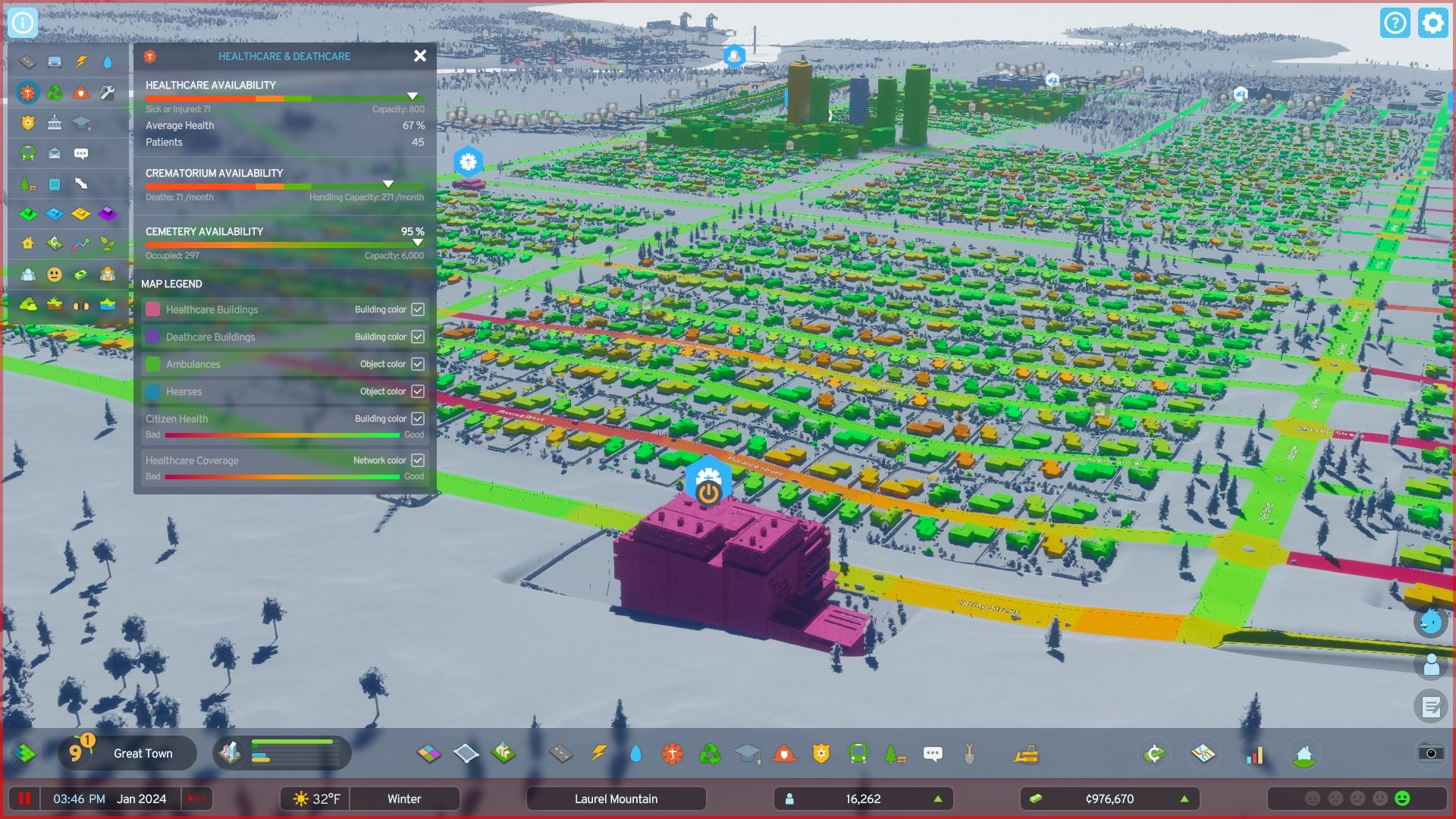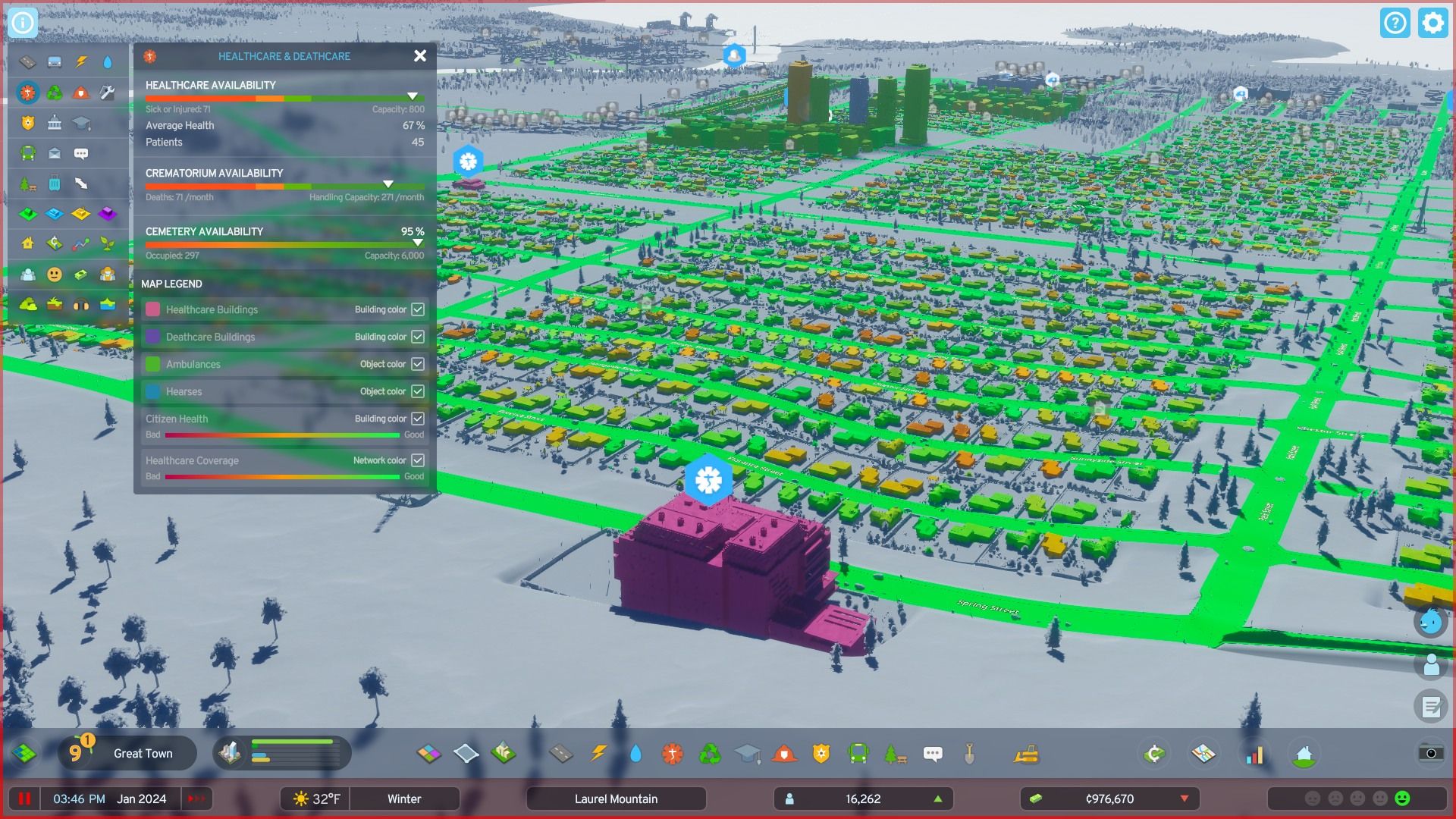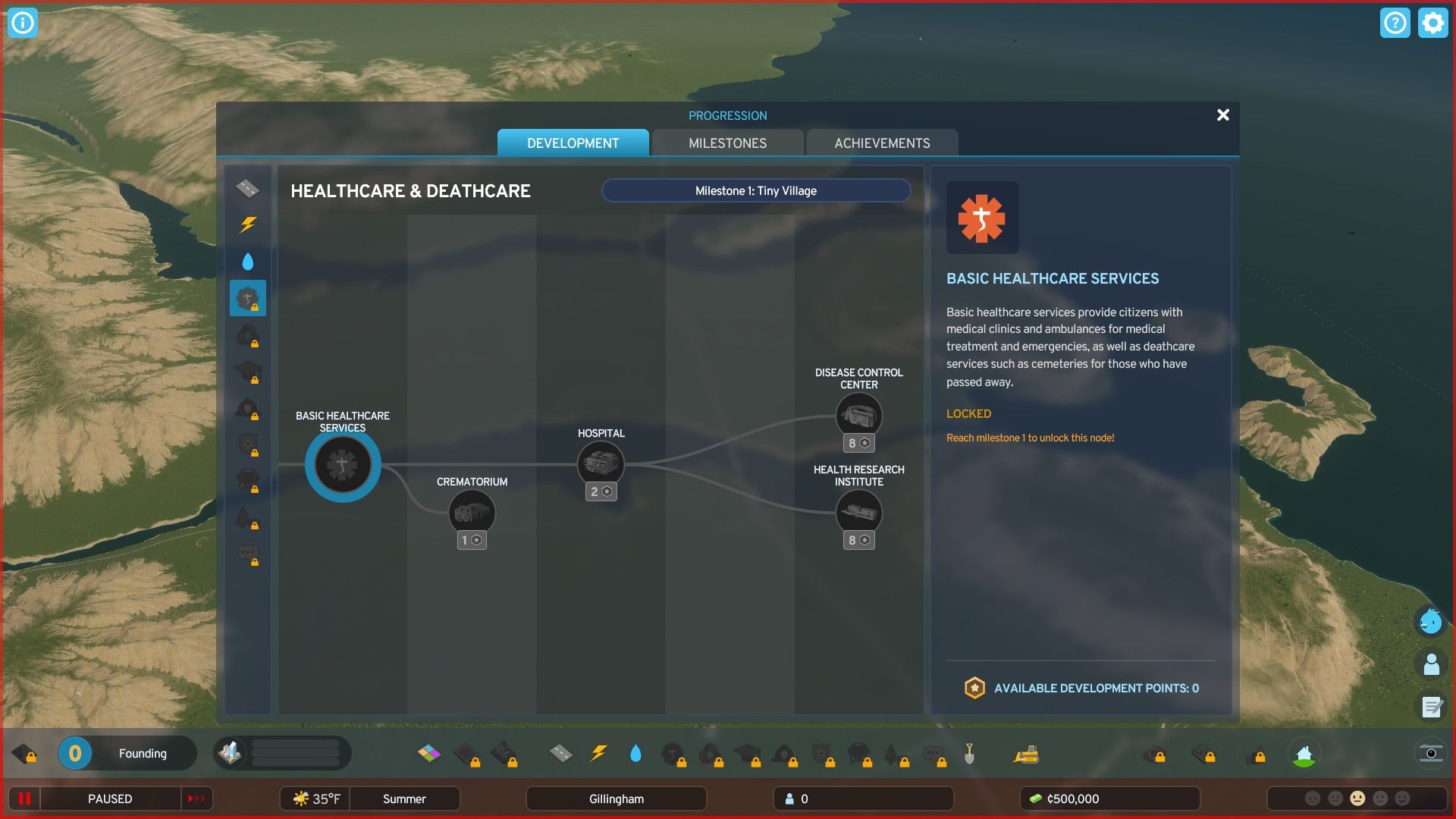
Strategies to Enhance Healthcare in Cities: Skylines 2

Boost your city's healthcare in Cities: Skylines 2 by strategically investing in the development tree Discover the advantages of clinics vs hospitals and explore other effective health boosters
Upon reaching the first milestone in Cities: Skylines 2, players gain access to basic healthcare and deathcare services. This includes a local clinic equipped with ambulances and a cemetery with hearses. However, for more advanced healthcare options, players must purchase them through the new development tree.
The game does not fully explain how healthcare and average health function in Cities: Skylines 2, leaving many players confused and questioning whether they have encountered a bug or made a mistake. This confusion is heightened when citizens constantly complain about healthcare on Chirper, despite having adequate access to clinics. The reality is that players must invest in superior healthcare facilities in order to improve the city's average health.
Clinics vs. Hospitals
In the original Cities: Skylines, the hospital served as an expanded clinic with a broader coverage area, providing enhanced capabilities to handle the needs of densely populated zones. These attributes are further emphasized in the sequel. To illustrate this, compare the road colors in the following images:
Almost every road transforms into a more vibrant shade of green, including those in the industrial zone across the river. While hospitals come with a hefty price tag compared to clinics, their range of services is remarkable.
Nevertheless, it is advisable for players to retain clinics even after establishing a hospital. The prompt response time is crucial for ambulance efficiency, as citizens can obtain superior outcomes when ambulances commence their journeys from closer distances, thereby circumventing traffic congestion.
A new concern in Cities: Skylines 2 is the introduction of "Average Health". Although citizen health has always been present in the series, its functionality has been altered. Merely constructing clinics will result in a stagnant Average Health percentage of approximately 60% in the Healthcare and Deathcare information view. Consequently, the most effective way to enhance this statistic is by investing in hospitals and other infrastructure that promotes the city's overall health. By incorporating just one hospital, the Average Health can be boosted to around 68%, with the potential for even further improvement by including additional buildings.
Other Average Health Boosters
In Cities: Skylines 2, healthcare facilities come with a hefty price tag. While the crematorium provides a cost-effective option and the hospital becomes more affordable when needed, the rest of the buildings require a significant investment of eight development points. This steep cost may not be feasible in the early stages of the game, especially considering the priority of unlocking other essential buildings. A single hospital can be sufficient to earn citizens' appreciation for the healthcare system, even though there may still be some critics. Therefore, until reaching the late-game milestones, relying on a hospital will have to suffice.
In addition to the Disease Control Center and the Health Research Institute, an alternative approach to enhancing the city's healthcare is through the acquisition and utilization of the Medical University. This facility, situated within the Education and Research development category, offers equivalent education opportunities as a standard University. However, it requires a higher investment for construction and maintenance and accommodates a smaller number of students, even after upgrades. Nevertheless, in return, it affords a city-wide enhancement to two Average Health aspects and, with the implementation of the Practice Clinic upgrade, extends a regional boost to Average Health.
In Cities: Skylines 2, Average Health encompasses more than mere clinic accessibility. Boosting this metric requires players to allocate resources to higher-cost healthcare options. The game is currently accessible on PC, PS5, and Xbox Series X/S platforms.
Cities: Skylines 2
Platform(s) PC, PS5, Xbox Series X, Xbox Series SReleased October 24, 2023Developer(s) Colossal OrderPublisher(s) Paradox InteractiveGenre(s) City Builder
Editor's P/S
In the recently released Cities: Skylines 2, healthcare has undergone significant changes compared to its predecessor. The introduction of the development tree offers players more control over their city's healthcare system, allowing them to strategically invest in various facilities to enhance the health and well-being of their citizens.
One important aspect of healthcare in Cities: Skylines 2 is the distinction between clinics and hospitals. While clinics provide basic healthcare services and ambulances, hospitals offer expanded capabilities and cover a broader area. The game incentivizes players to invest in hospitals as they significantly improve the average health of the city. However, it is still beneficial to retain clinics even after establishing a hospital, as their prompt response time can be crucial in densely populated areas.










